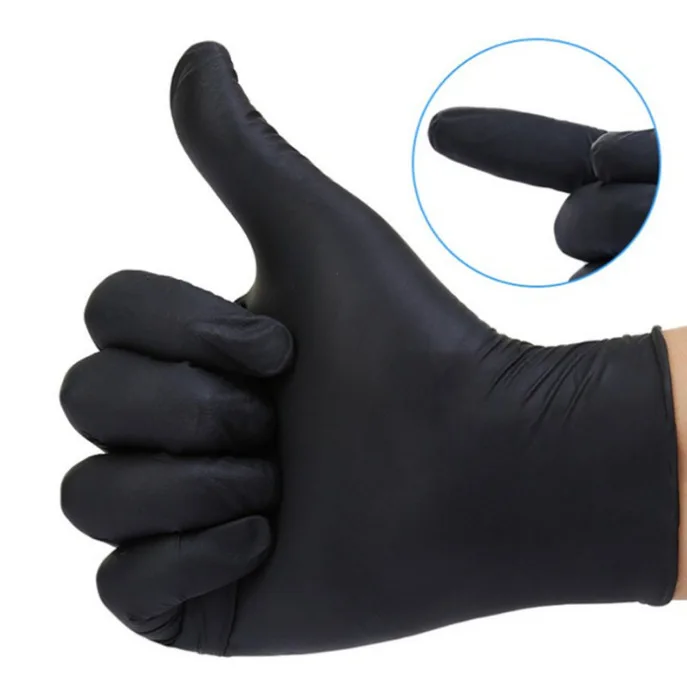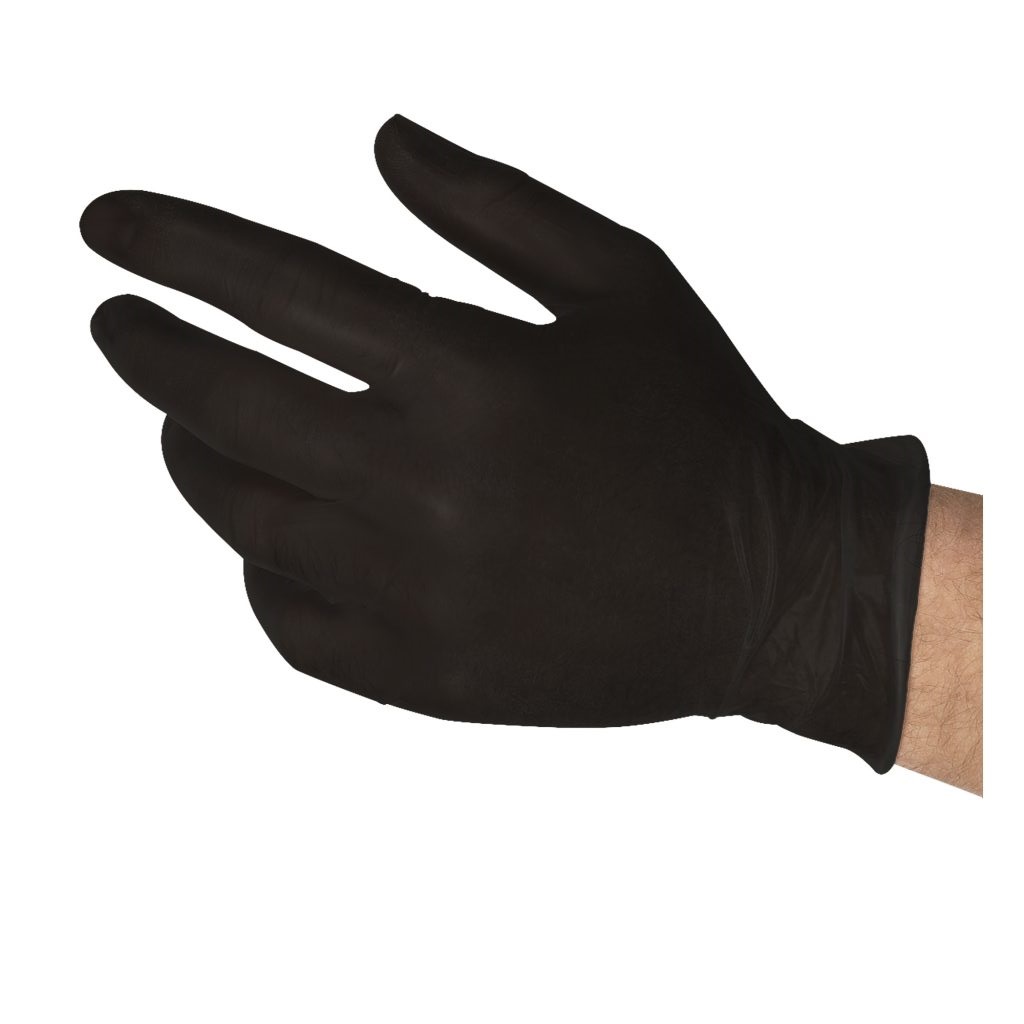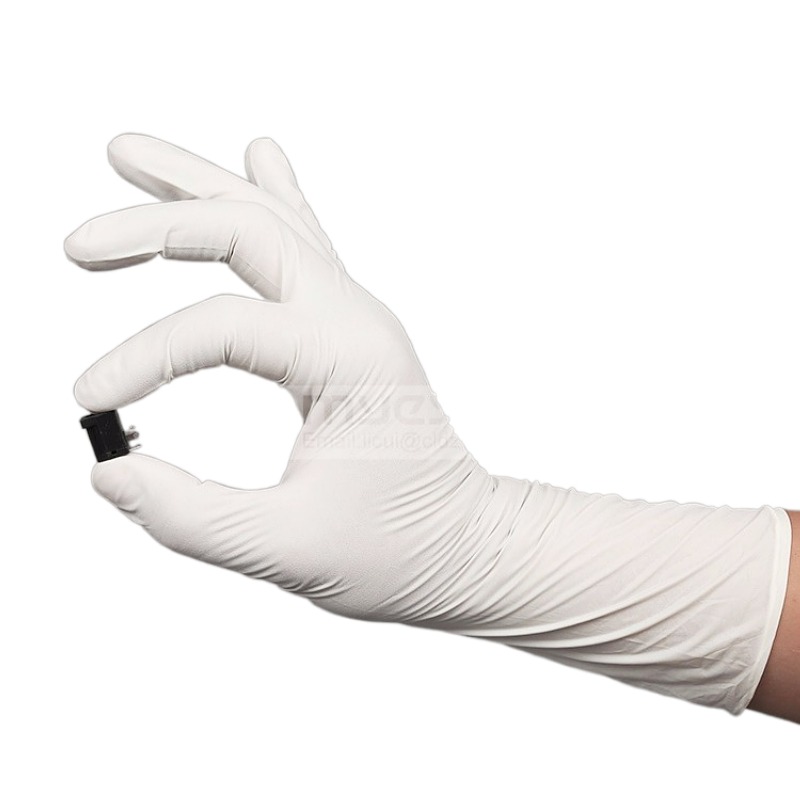In the world of disposable gloves, thickness is often the first specification buyers look at—but it’s far from the only factor that matters. Whether you’re in cleanroom assembly, industrial maintenance, or medical diagnostics, glove thickness affects more than just protection. It influences comfort, dexterity, tactile sensitivity, fatigue levels, and even your safety.
In this article, we’ll break down what glove thickness really means, how it correlates with glove weight, why gloves with the same mil rating can feel completely different, and how to make informed decisions when choosing the right glove for your job.
Understanding Glove Thickness
Glove thickness refers to the measurement of the glove wall, typically expressed in mils (1 mil = 0.001 inch or 0.0254 mm). Most manufacturers measure thickness at three key points:
-
Palm: typically the average listed on glove boxes
-
Fingertips: usually slightly thicker for added durability
-
Cuff: often thinner for flexibility and donning ease
Some gloves may be listed as “5 mil” at the palm and “6 mil” at the fingertips, but this doesn’t guarantee uniformity in real-world use. Also, pay attention to whether the rating is single-wall (just one layer) or double-wall (both sides combined).
Thickness vs. Tactile Sensitivity
The thicker the glove, the more protection it typically offers—but with increased thickness comes a trade-off in dexterity and tactile feedback. In cleanroom environments or precision mechanical work, operators often prefer gloves in the 2–4 mil range, while heavier-duty tasks like auto maintenance or industrial chemical handling may require gloves 6 mil and up.
Still, users often find that gloves labeled with the same thickness feel dramatically different. Why?
Why Two 5-Mil Gloves Can Feel Completely Different
Let’s take two real-world nitrile gloves as examples:
-
Kimberly-Clark Purple Nitrile Gloves – 5.5 mil at fingertips
These gloves feel firm, with high resistance to stretch. The material formulation prioritizes barrier performance for medical-grade use, particularly in environments with chemotherapy agents or biohazards. -
Adenna Shadow Black Nitrile Gloves – 6 mil at fingertips
Despite being thicker on paper, these gloves feel softer and more flexible. They’re often favored by tattoo artists, mechanics, and clean-up crews who need stretchability and comfort during long wear.
What causes this difference?
-
Polymer blend & curing process
Nitrile rubber formulations vary significantly. More sulfur = stiffer gloves; more plasticizers = stretchier gloves. -
Surface treatment
Chlorination, texturing, and inner coating impact how the glove feels and moves. -
Manufacturing precision
Some brands are known for tight tolerances, which improves tactile consistency even at higher thickness.
The Missing Metric: Glove Weight
An often-overlooked factor in glove selection is glove weight, typically measured in grams per glove (for size M). While thickness provides a localized wall measurement, weight gives a fuller picture of the material volume and density.
For example:
| Brand | Stated Thickness (Palm) | Avg. Weight (Size M) | Feel/Performance |
|---|---|---|---|
| Myesde 4.5 Mil Nitrile Glove | 4.5 mil | 4.8g | Light, flexible, high sensitivity |
| Blue Sail 4.5 Mil Nitrile | 4.5 mil | 5.4g | Slightly firmer, more durable |
| VGlove (Vietnam) 5.0 Mil | 5.0 mil | 6.0g | Tactile yet firm, good for medium-risk handling |
| Cranberry Evolve 300 | 2.5 mil | 3.0g | Ultra thin, silky feel, maximum dexterity |
As seen above, two gloves with the same stated thickness can differ by over 1 gram in weight, significantly impacting comfort, fatigue, and barrier integrity.
Pro tip: If you’re buying in bulk, ask your supplier for glove grams per piece data. In some cases, a lower-mil glove with higher weight can outperform a higher-mil glove made with less dense material.
When to Choose Thicker vs. Thinner Gloves
| Use Case | Ideal Thickness | Notes |
|---|---|---|
| Fine assembly (e.g., microchips) | 2–3 mil | Prioritize dexterity and low particle shedding |
| Lab and light inspection | 3–4 mil | Balance sensitivity with moderate barrier needs |
| Auto detailing, maintenance | 5–6 mil | Protects against oil, grime, and sharp edges |
| Industrial cleaning, heavy chemicals | 7–8 mil | Maximum puncture and solvent resistance |
| Tattoo, cosmetic, and salon use | 4–6 mil | Comfort for long hours + ink and dye resistance |
Real-World Tip: Thickness ≠ Safety
It’s a common misconception that thicker = safer. While it’s true that thicker gloves offer more puncture resistance, they can also reduce grip sensitivity, cause hand fatigue, and encourage wearers to change gloves less frequently, which ironically may increase contamination risk.
How to Choose the Right Thickness (and Weight)
-
Don’t rely on mil rating alone – compare both thickness and weight for a full picture.
-
Request samples before bulk buying – real-world testing always beats spec sheets.
-
Consider task duration – prolonged use favors lighter gloves to reduce fatigue.
-
Look for brand consistency – not all factories control wall thickness equally.
-
Use tactile-critical tasks as benchmarks – e.g., handling a syringe, threading a cable, or screwing a micro-component.
Final Thoughts
The ideal glove balances protection, flexibility, and wearability, and understanding glove thickness and weight together is key to making informed choices. Don’t assume all 5-mil gloves are alike, and don’t overlook how density and brand-specific formulations shape real-world performance.
Whether you’re sourcing for your cleanroom, operating room, or industrial floor, investing in the right thickness—not just more thickness—pays off in both safety and user satisfaction.






